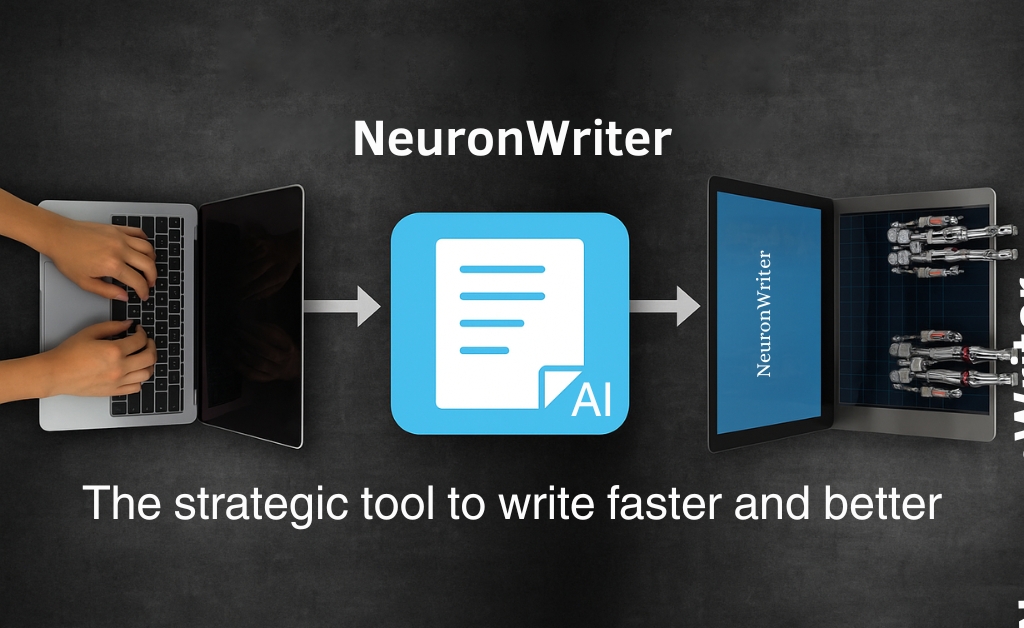Every business is fighting for attention online and writing high-quality content has become a must-have skill blog posts, newsletters, social media captions, video scripts… formats are multiplying and so is the pressure to produce more without compromising quality.
But crafting a good piece of content takes time, energy and real expertise. from finding ideas to structuring your message, optimizing for SEO and doing multiple rounds of editing, the process can quickly become overwhelming.
Luckily a new ally has entered the scene: artificial intelligence with the help of modern tools, you can now write faster without sacrificing quality-in fact, you might even improve itin this guide, we’ll show you exactly how AI is transforming the writing process, which tools to use and how to integrate them into your workflow.
Why writing is still a tough task
Before diving into how AI can make your life easier, let’s take a quick look at the usual challenges content creators face:
- Lack of time: a well-written article can take several hours -between research, drafting, editing and publishing
- Writer’s block: we’ve all stared at a blank page, struggling to find fresh ideas or angles
- Content structure: turning your thoughts into a clear, logical flow is a real skill
- SEO requirements: to rank on google you need to juggle keywords, headings, readability, meta descriptions and more
- Tone and style: you have to adapt your writing to your audience whether it’s casual, professional or technical
- Editing: grammar mistakes, awkward phrasing and repetitions are tedious but must be fixed
The result? many creators slow down their publishing rateor let quality slide
How AI can help you at every step
Thanks to tools like ChatGPT, Jasper AI, Claude, and Writesonic, you can streamline your workflow and boost your writing speed across every stage of content creation.
-
Generate ideas and outlines in seconds
Need inspiration? AI can analyze a keyword or topic and instantly suggest article titles, angles and content ideas perfect for getting past writer’s block.
Even better, many tools will automatically create detailed outlines (H1, H2, H3) with content suggestions for each section giving you a strong foundation to build on.
-
Write a first draft quickly… then refine it
Once your structure is ready, AI can generate a complete draft from a simple prompt just a headline a phrase or a key idea.
Unlike older text generators, today’s tools produce content that’s coherent, clear and surprisingly human-like you can also ask the AI to rephrase, clarify or expand on certainparts and of course, fix grammar, adjust tone, or tailor the style to your target audience.
-
Improve your SEO without being an expert
Top-tier AI tools now come with built-in SEO features platforms like NeuronWriter, Surfer SEO or Frase combine content creation with SEO optimization
they guide you through keyword inclusion, ideal content length, header usage, meta descriptions and more no advanced SEO knowledge required.
Real benefits for your content creation workflow
Bringing AI into your writing process can drastically boost your productivity. if you’re aiming to scale your content output efficiently, there are proven strategies that show how AI tools can help you produce 10x more with less effort.
- Huge time savings: you can cut writing time by 50–75%
- Higher quality: your texts become clearer, better structured, and easier to read
- Fewer errors: grammar, spelling, and syntax are automatically corrected
- Adapted tone: easily match the voice to your audience – casual, formal, storytelling etc…
- Consistent publishing: weekly or even daily posting becomes manageable
- Accessible to everyone: you don’t need to be a pro writer to create pro-level content
How to integrate AI into your writing workflow
a) Stay in control of strategy and creativity
AI is your assistant not your brain. define your goals, key messages and editorial voice before starting the more precise your brief, the better the result.
b) Co-create with the AI
Never treat the aI’s first draft as final read through it, tweak it, add personal touches. Insert anecdotes, real-life examples and unique insights that’s what gives your content personality.
c) Learn how to talk to the AI
The secret to great output is a great prompt be clear, specific and include examples. try different phrasing until you get the version you want over time, you’ll learn how to (speak AI) effectively.
d) Plug AI into your existing tools
Most AI assistants offer plugins or integrations with platforms like Google docs, Notion or WordPress this cuts down on copy-pasting and keeps your workflow seamless.
A few limitations to keep in mind
- AI can be wrong: always fact-check names, dates and data
- It’s not a human: emotions, storytelling, and nuance are still your job
- Overuse leads to sameness: don’t let your content lose its voice
- Data privacy matters: avoid feeding sensitive information into AI tools without reviewing their terms of service
Real-life examples of AI writing in action
- A blogger creates 5 article ideas with outlines in just 10 minutes
- A solopreneur writes her weekly newsletter in under an hourstress-free
- A coach turns training modules into YouTube scripts using AI to rewrite notes
- A marketer A/B tests landing page variations or slogans in a few clicks
Final thoughts: better writing, faster results – without losing the human touch
AI is no longer just a trendy tool it’s a powerful co-pilot for anyone creating content used smartly, it helps you work faster, write better and connect more effectively with your audience.
But to really get the most from AI, you need to stay in the driver’s seat: set your strategy, refine the outputs and add that human layer that makes content resonate.
In our next post, we’ll introduce a high-performing AI writing tool, complete with a step-by-step tutorial to get you started.
What about you? are you already using AI for writing? share your favorite tools and experiences in the comments



